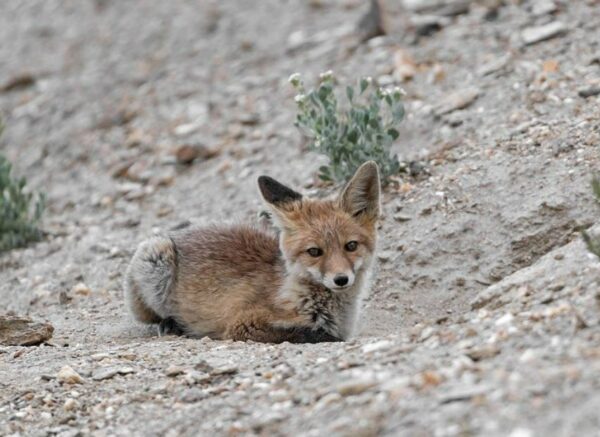One of the most popular tourist destinations in India is its northern most union territory – Ladakh. And what makes it so popular is the unique features found here – The cold deserts. These cold deserts are remarkable ecosystems characterized by extreme temperatures, harsh winds, and limited water resources. Despite these challenging conditions, a diverse range of plant and animal species have adapted to survive in these harsh environments, which makes them important centers of biodiversity. Lets explore the biodiversity of India’s cold deserts and the unique adaptations that enable species to thrive in these extreme conditions.
The cold deserts of India are located in the high altitude regions of the Himalayas. These regions are characterized by low precipitation, with most of the water coming from snow and glacial melt. The temperatures in these regions can drop to -40°C in winter, and the strong winds can create blizzards & sandstorms. Despite these challenges, the cold deserts of India are home to a remarkable diversity of species, including a range of rare and endemic species which are found nowhere else in the world.

How are flora adapted to India’s cold deserts?
One of the most distinctive features of the cold deserts of India is their unique flora. The harsh conditions of the desert have led to the evolution of specialized plant species that are adapted to survive in these conditions. Many of these plants have small, waxy leaves that help to the plan to reduce water loss through transpiration. Others have developed long roots that can reach deep into the soil to access water reserves. Still, others have evolved thick stems and leaves that store water for times of drought.
One example of a specialized plant species found in the cold deserts of India is the Ladakh poppy (Meconopsis aculeata). This plant has adapted to survive in the extremely dry conditions of the region by developing a deep taproot that can access water reserves deep underground. This plant also has a waxy coating on its leaves that helps to reduce water loss through transpiration.
Fauna of Indian cold Deserts
In addition to specialized plant species, the cold deserts of India are also home to a range of unique animal species that have adapted to survive in these extreme conditions. One of the most iconic animals found in the cold deserts of India is the snow leopard (Panthera uncia). This large cat is perfectly adapted to life in the high mountains, with thick fur that insulates it from the cold and large paws that enable it to move easily over snow and ice. As per IUCN, the snow leopard is a critically endangered species, with fewer than 10,000 individuals estimated to remain in the wild.
However, snow leopards are not the only megacarnivoures lurking the rugged landscapes. The Critically Endangered Himalayan Brown Bear is a star attraction for wildlife biologists in the the cold mountains of Dras and Kargil. Unfortunately, human wildlife conflict, war and the illegal wildlife trade have destroyed their population.
Another important animal species found in the cold deserts of India is the Tibetan wild ass (Equus kiang). This large mammal is well-adapted to life in the desert, with a thick coat that helps to insulate it from the cold and strong legs that enable it to run quickly over rough terrain. The Tibetan wild ass is an important prey species for predators such as snow leopards and wolves, and it is also hunted by local communities for its meat & skin.
Provisioning services which Cold Deserts provide us
The biodiversity of the cold deserts of India is not only important for its intrinsic value but also for the benefits it provides to humans. Many of the plant and animal species found in these ecosystems have important medicinal properties and are used by local communities for a range of purposes. For example, the Tibetan medicinal plant, Rhodiola sacra, is found only in the cold deserts of India and is used to treat a range of ailments, including altitude sickness, depression, and fatigue. The wool of the Tibetan wild ass is also used to make traditional clothing, providing an important source of income for local communities.
Like most of the valuable ecosystems, cold deserts of India are also facing a range of threats, including climate change, habitat loss, and overgrazing. Climate change is causing temperatures to rise in the region, leading to changes in precipitation patterns and increased risk of wildfires. Habitat loss and degradation are also major threats to the ecosystem.
Conservation Efforts
Protecting the cold deserts of India is crucial to protect the remarkable biodiversity found in these ecosystems. One important initiative is the establishment of protected areas such as the Hemis National Park and Changthang Wildlife Sanctuary, which provide a safe haven for threatened species such as the snow leopard and Tibetan wild ass. Also, efforts are being made to reduce overgrazing and promote sustainable land use practices to reduce the impact of human activities on these fragile ecosystems.
Local communities are also being engaged in conservation efforts, with programs focused on raising awareness about the importance of biodiversity conservation and providing alternative livelihood options such as ecotourism. Through these efforts, it is hoped that the remarkable biodiversity of India’s cold deserts can be preserved for future generations.
Help us Help Them! Think Wildlife Foundation is a non profit organization with various conservation initiatives. Our most prominent campaign is our Caring for Pari intiative. Pari is a rehabilitated elephant at the Wildlife SoS Hospital. 25% of the profits from our store are donated to the elephant hospital for Pari. Other than buying our wonderful merchandise, you could donate directly to our Caring For Pari fundraiser.
Written by: Ram Dayal Vaishnav
